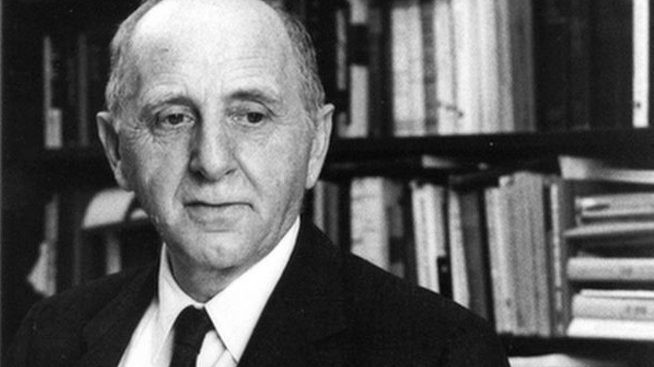
Date: 2025-02-05 Page is: DBtxt003.php txt00007461
GREAT ECONOMISTS
SIMON KUZNETS (1901-1985)
Inter alia, Kuznets is known for his studies of
national income and its components.
SIMON KUZNETS (1901-1985)
Inter alia, Kuznets is known for his studies of
national income and its components.

Peter Burgess COMMENTARY
I don't know that much about Simon Kuznets other than in combination with Maynard Keynes the work they both did better to understand the causes of the Great Depression and how best to regulate a national economy ... Keynes in the UK and Kuznets in the USA.
My formal economics education took place at the start of the 1960s. At that time there was a robust discussion about replacing GDP (Gross Domestic Product) with a better structured metric to document national economic health. It was widely accepted that GDP ... or GNP ... were not very good measures of economic performance and something better was needed.
In 1960 this was not a new idea. It had already been around for upwards of 20 years. So fast forward to the present day (at the time of writing this 2023) and GDP with all its flaws is still being used!
Part of my agenda as an older person with some experience in a variety of settings is to pull out of the work of the iconic figures of the past, the elements that can be used now to optimise performance ... that is to maximise quality of life ... for all people. Modern productivity is amazing, but the way it is 'organized' is awful and needs to be fixed.
Peter Burgess
Simon Kuznets is best known for his studies of national income and its components. Prior to World War I, measures of GNP were rough guesses, at best. No government agency collected data to compute GNP, and no private economic researcher did so systematically, either. Kuznets changed all that. With work that began in the 1930s and stretched over decades, Kuznets computed national income back to 1869. He broke it down by industry, by final product, and by use. He also measured the distribution of income between rich and poor.
Although Kuznets was not the first economist to try this, his work was so comprehensive and meticulous that it set the standard in the field. His work was funded by the nonprofit National Bureau of Economic Research, which had been started in 1920. Kuznets later helped the U.S. Department of Commerce to standardize the measurement of GNP. In the late 1940s, however, he broke with the Commerce Department over its refusal to use GNP as a measure of economic well-being. He had wanted the department to measure the value of unpaid housework because this is an important component of production. The department refused, and still does.
Kuznets’s development of measures of savings, consumption, and investment came along just as Keynes’s ideas about how national income is determined created a demand for such measures. Thus, Kuznets helped advance the Keynesian revolution. Kuznets’s measures also helped advance the study of econometrics established by ragnar frisch and jan tinbergen.
Kuznets approached his work with a strict adherence to fact and a desire to understand economic phenomena through quantitative measurement. He had started early in his native Russia: he was head of a statistical office in the Ukraine under the Bolsheviks before moving to the United States at age twenty-one.
Many economists believe that Kuznets received the 1971 Nobel Prize for his measurement in national income accounting, and certainly that was enough to merit the prize. But in fact, the prize was awarded for his empirical work on economic growth. In this work Kuznets identified a new economic era—which he called “modern economic growth”—that began in northwestern Europe in the last half of the eighteenth century. The growth spread south and east and by the end of the nineteenth century had reached Russia and Japan. In this era, per capita income rose by about 15 percent or more each decade, something that had not happened in earlier centuries.
One of Kuznets’s more startling findings concerns the effect of economic growth on income distribution. In poor countries, he found, economic growth increased the income disparity between rich and poor people. In wealthier countries, economic growth narrowed the difference. In addition, Kuznets analyzed and quantified the cyclical nature of production and prices in spans of fifteen to twenty years. Such trade cycles, while disputed, are often referred to as “Kuznets cycles.”
Kuznets was a professor of economics at the University of Pennsylvania (1930–1954), Johns Hopkins University (1954–1960), and Harvard University (1960–1971). He was president of the American Economic Association in 1954.
Selected Works
1934. National Income, 1929–1932. Senate document no. 124, 73d Congress, 2d session.
1937. National Income and Capital Formation, 1919–1935. New York: National Bureau of Economic Research.
1945 (with Milton Friedman). Income from Independent Professional Practice. New York: National Bureau of Economic Research.
1946 (assisted by Lillian Epstein and Elizabeth Jenks). National Product Since 1869. New York: National Bureau of Economic Research.
1953 (assisted by Elizabeth Jenks). Shares of Upper Income Groups in Income and Savings. New York: National Bureau of Economic Research.
1965. Economic Growth and Structure: Selected Essays. New York: Norton.
1966. Modern Economic Growth: Rate, Structure, and Spread. New Haven: Yale University Press.
1971. Economic Growth of Nations: Total Output and Production Structure. Cambridge: Belknap Press of Harvard University Press.